Is the Newly Reinvented Boca Raton One of the Best Resorts in the U.S.—Again?
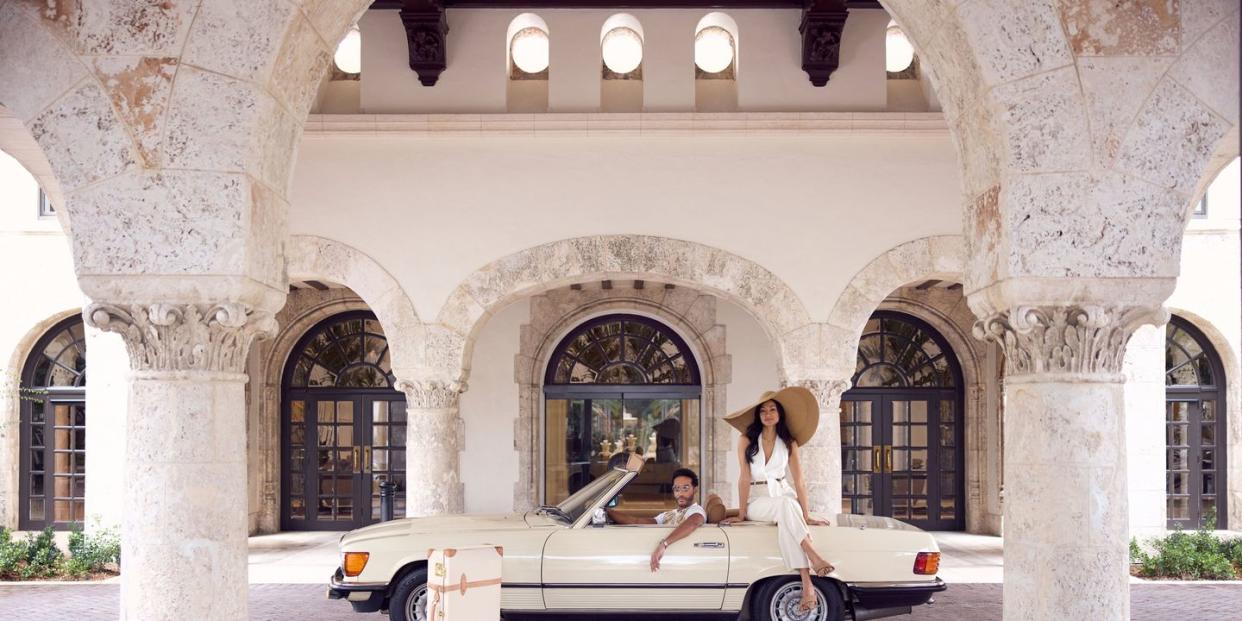
Confession: Sprawling resort complexes are usually not my thing. I don't find feeling like a cog in a constructed holiday environment relaxing or restorative. And there's the people problem—love the art-deco chic of Miami's South Beach area, but I'd really rather not vacation among crowds.
Which is why, mid-morning on my first full day at The Boca Raton, as southern Florida's recently refurbished Boca Raton Resort & Club is now called, I surprised myself: This, I found myself thinking, is a big resort (and it is big—more than 1,047 rooms, in five component hotels, on 337 acres) that I can relate to.
I'd had breakfast early, soon after sunrise, at Flybridge, the restaurant on the top floor of the Boca Raton's adults-only Yacht Club hotel, where I was staying. I sat outside on its terrace, in near solitude. Heaven. And rather than blasts of icy air conditioning, I had sea breezes and views of Lake Boca Raton and its yacht-studded marina. (The lake is actually the widest part of the so-called Intracoastal Waterway, once a swamp that was dredged by the government in the 1930s and runs parallel to the ocean here.) The sun glinted off the lake's smooth water and I could see the Atlantic just beyond—water and more water, my kind of place. After, I meandered over to the resort's Spa Palmera, where I was scheduled for a 9:30 a.m. "sensory awakening massage." My walk took me through quiet, pink-walled Mediterranean-Revival-style courtyards, past a fountain that looked like it had been there for centuries, and what felt like secret gardens—little enclaves of lush tropical vegetation.
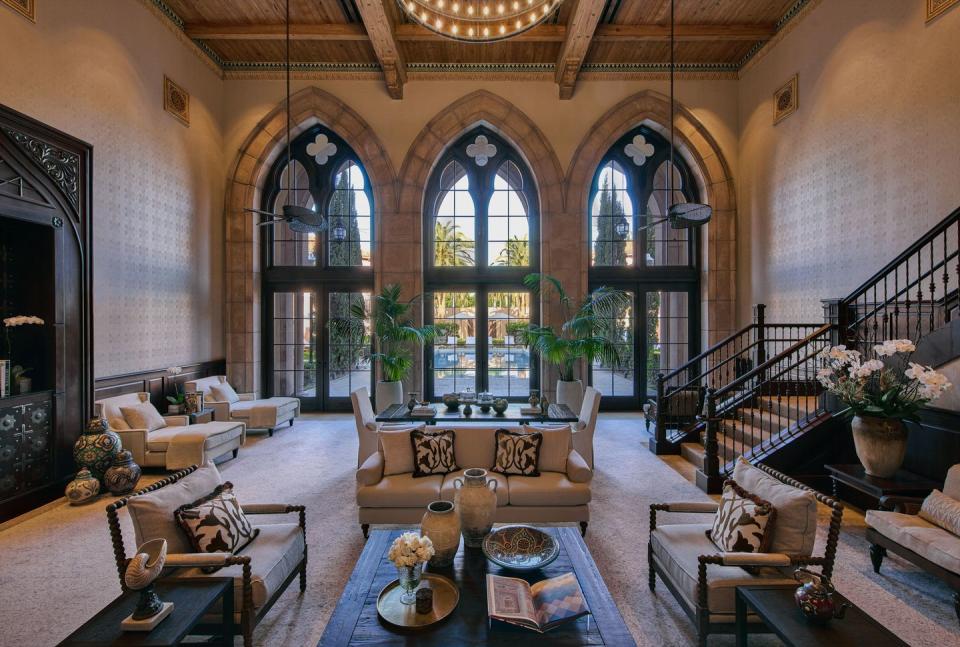
The spa's 50,000 square feet of treatment rooms, baths, whirlpools, and plunges were recently redesigned by the events and lifestyle guru Colin Cowie and were inspired, I'm told, by the Alhambra, in Seville. All I know is that the Med-Spanish-Colonial Revival thing was working for me. I felt ever so slightly disoriented, floaty, in a good way: Where exactly was I? And in which century? The pastel walls, arched entryways, ornate columns, carved woods, and intricate mosaics were triggering in the best possible way—of classic Old World holidays, pleasure, leisure.
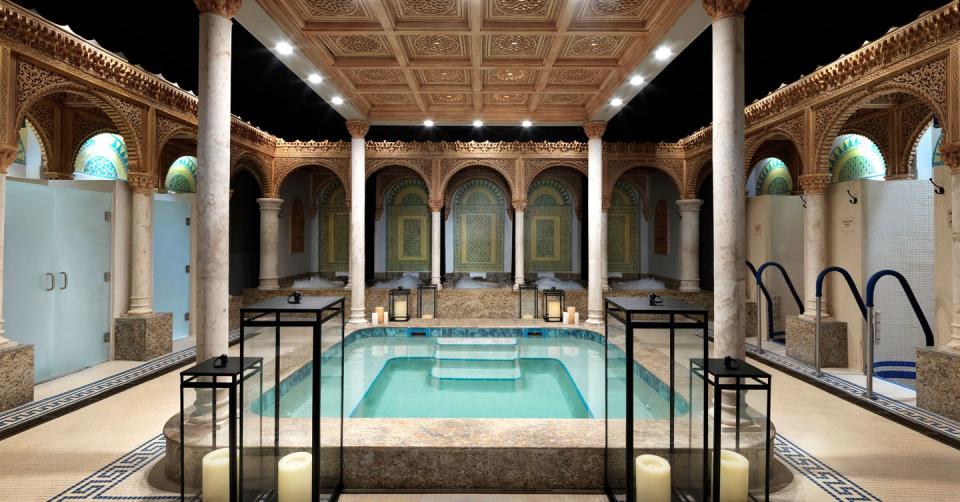
And now, massage over and senses "awakened," I was lounging on a chaise longue by the spa's outdoor pool, taking in the cypress trees, the white umbrellas, and the silence. The entire resort has eight pools now (up from six before the nearly three-year renovation), and this one is open exclusively to spa-goers and/or guests of the Yacht Club. There are only two other people here, both reading books. Me? I'm pondering the Cafe Menu, which an attendant has just brought over. It's perhaps too early for the "Sunkissed Fizz"—vodka, yuzu, key lime, peach and jasmine. But one of the cold-pressed juices is calling to me: beet, carrot, apple, ginger, and lemon. It's called "Rooted Beginnings," and the name perfectly reflects what strikes me at that moment as the appeal of the Boca Raton: It may have just been extensively "reimagined"—to the tune of $200 million, after tech billionaire Michael Dell and his MSD Holdings acquired it in 2019. But what to my mind sets it apart from many a resort complex, what gives it its genuine grande dame "soul," is its embrace of its beginnings, its rootedness in them. Its story.
And what an origin story this place has—a tale of dreams and disasters, talent and poor timing, bankruptcy and rebirth. All of it kicked off by Florida's brief 1920s land boom.
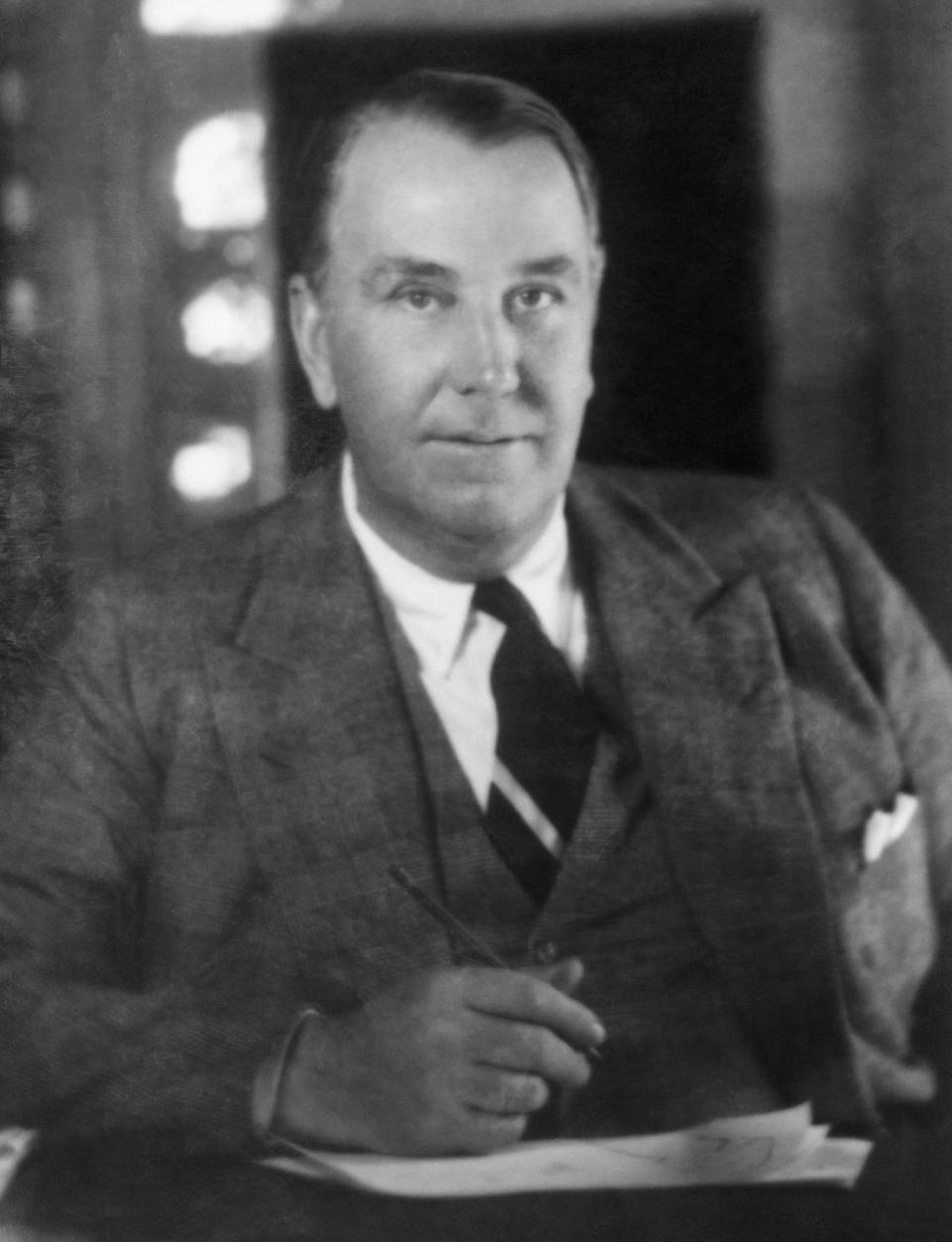
The seeds of the boom were sowed early. In the 1890s, the Florida East Coast Railway was extended first to West Palm Beach, then to Miami, and finally to Key West. The Everglades were being drained, creating new terra firma. And since World War I there had arisen an enormous appetite among America's rich—who had been cut off by the war from their seasons in the sun on the French Riviera—for parts of the U.S. with a Mediterranean or tropical climate. (Although little was understood as yet about the frequency and strength of Florida's storms and hurricanes.)
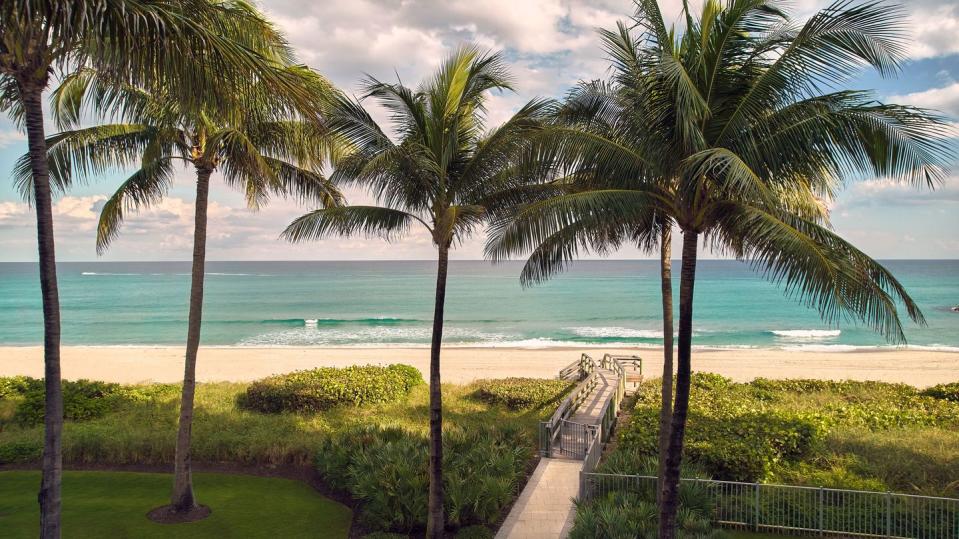
Which is how the well-known Palm Beach society architect Addison Mizner came to set his sights, by the early 1920s, on a small, unincorporated, and ideally situated farming community of 100 souls called Boca Ratone (meaning either "mouse mouth" or "rugged inlet" in Spanish), known primarily for its pineapples. It had grown up around the aforementioned railroad tracks, roughly mid-point between Palm Beach and Miami, and—resort-world gold—had a pristine two-mile stretch of white-sand Atlantic beach.
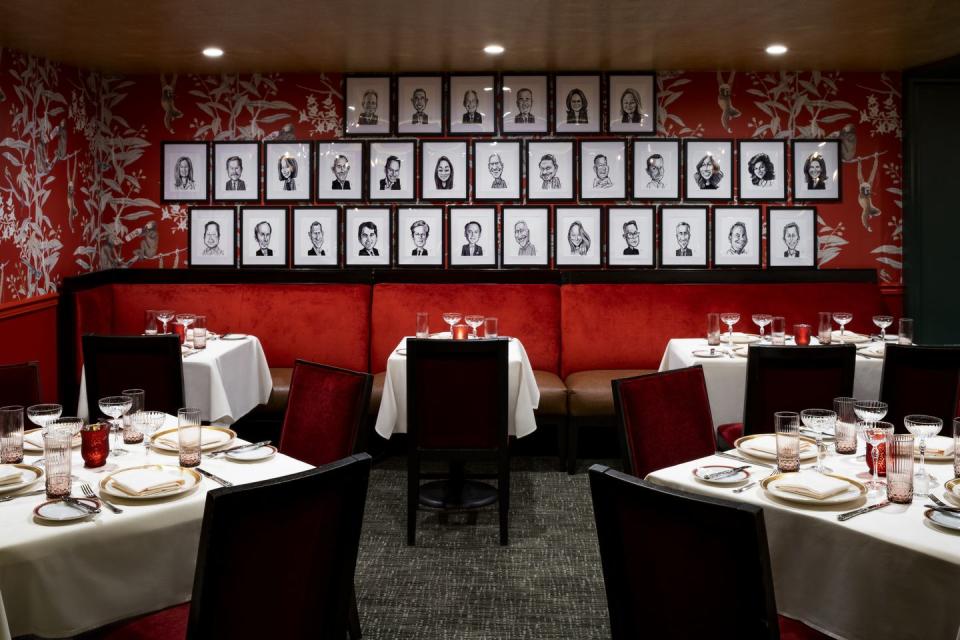
Mizner was at that time an already well-known figure, an eccentric bon vivant and Palm Beach society darling whose almost daily cocktail hours at his Villa Mizner on Worth Avenue, where his friend Irving Berlin would often entertain, personified, according to the Palm Beach Social Gazette, "the post-World War I rise of America’s 'cocktailing classes,'" and which Mizner frequently attended with one of his beloved pet monkeys on his shoulder. While Mizner did not invent Mediterranean (or Spanish Colonial) Revival architecture, he was one of the best known architects working in the style, characterized by multi-level roofs, stuccoed walls, iron work, and red barrel tiles. Between 1919 and 1924, he had designed some 67 structures in and around Palm Beach, including private mansions and the exclusive Everglades Club.
Things moved quickly: The town of Boca Raton incorporated in 1924. Almost concurrently, in 1925, Mizner revealed his ambitions for its development: There would be a hotel, the town's magnet and centerpiece, where prospective buyers could stay and sample the Boca Raton lifestyle (and then buy land and houses which he, Mizner, would design). There would be grand homes, a golf course and polo grounds, and wide palm-tree lined boulevards. That same year, the town fathers, impressed by Mizner's vision, engaged his services not just as architect but as town planner, and the Mizner Development Corporation (MDC) was founded, its investors including noted personages with connections to Palm Beach, among them friends and acquaintances of Mizner: Harold Vanderbilt, Rodman Wanamaker, Paris Singer, Irving Berlin, Elizabeth Arden, Clarence H. Geist, T. Coleman du Pont, and others.
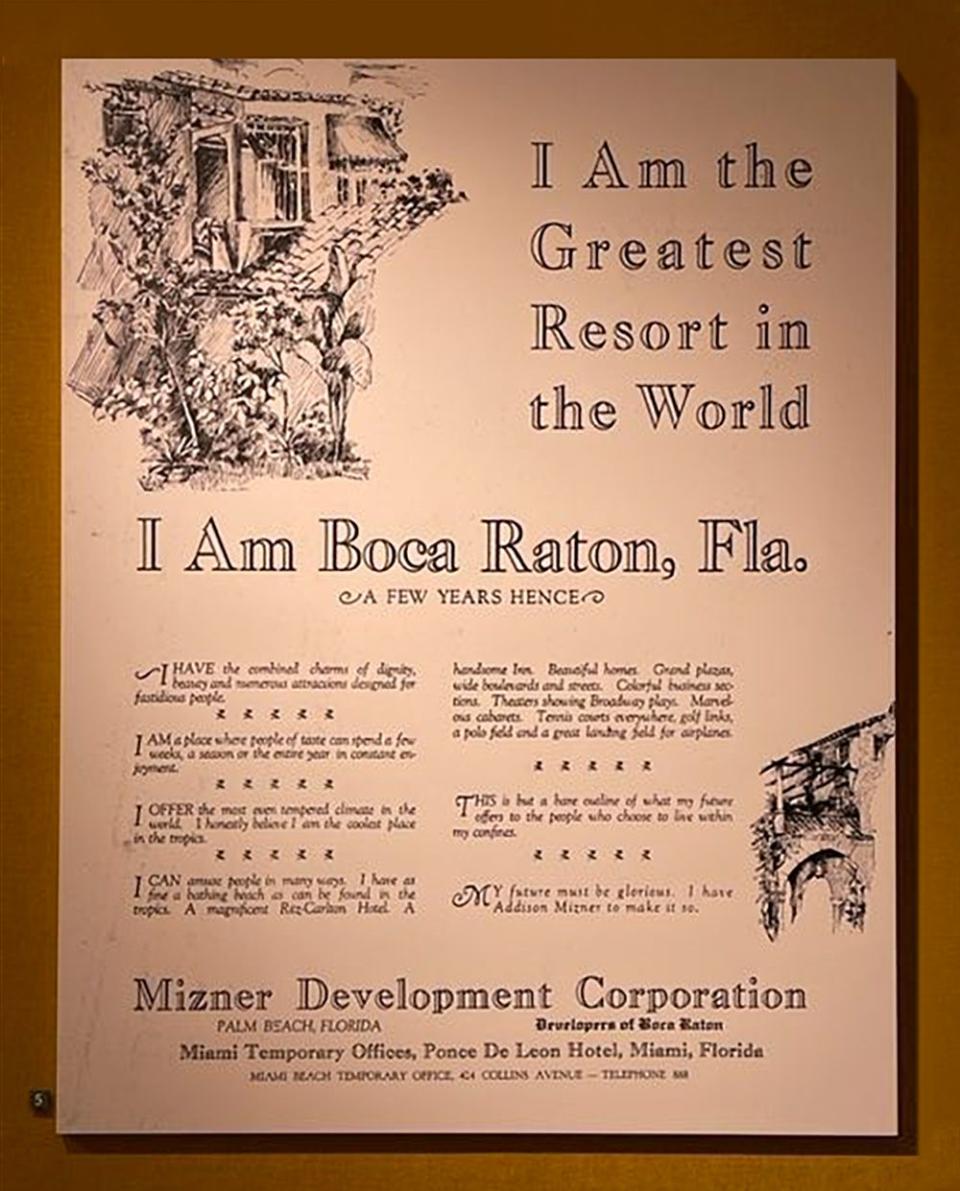
Boca Raton quickly became the most famous of the Florida boom projects and the MDC did not stint on hyperbole in its advertisements, aimed at potential real estate investors. The ads appeared not only in Florida newspapers like the Palm Beach Post, but also in The New York Times: "Greatest Resort in the World," they blared. And "The Dream City of the Western World." One ad went the distance, comparing Boca Raton to "the Riviera, Biarritz, Mentone, Nice, Sorrento, the Lido, Egypt," and summing it up thus: "all that charms in each of these [places] finds consummation in Boca Raton."
The MDC's sales office and Boca Raton headquarters were quickly completed (part of the so called Administration Building was said to be modeled on El Greco's house in Toledo, Spain). And the Cloister Inn, Mizner's Mediterranean-Revival-style hotel on the western shore of Lake Boca Raton, opened in late 1925 to much acclaim.
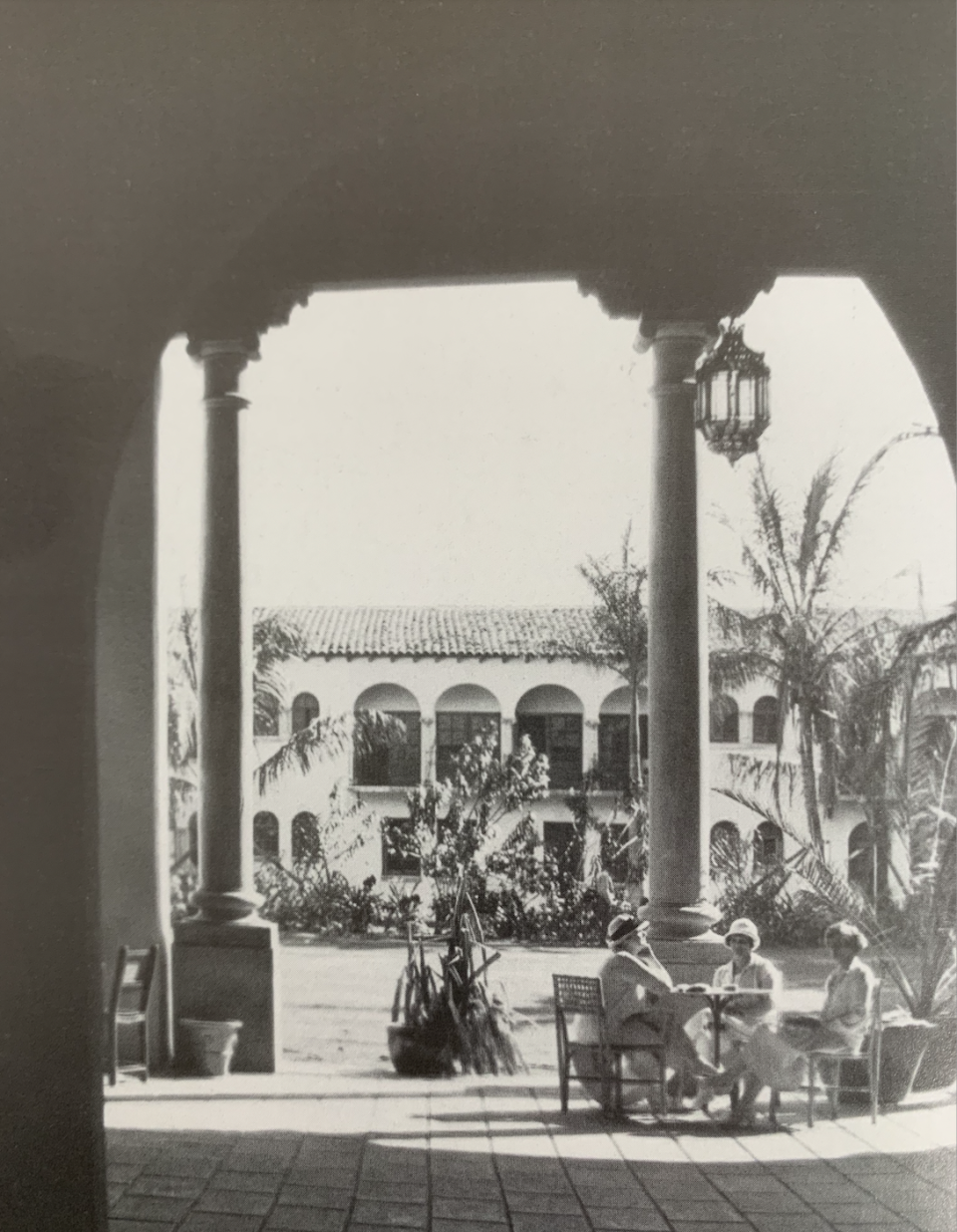
It is "simple to severity in its whole," opined one critic (according to the Boca Raton Historical Society), "yet rich in delights." The walls of the hotel, said the Palm Beach News, "looked as if they had reflected the passing history of ages." Its tower provided a view of Lake Boca Raton and the ocean and was modeled on Seville's Giralda Tower. Leaving no details unattended, Mizner, through his Mizner Industries firm, also designed and manufactured the hotel's elegantly austere Spanish-themed furnishings—tables, chairs, lighting. (Many of the pieces are now in the collection of the Boca Raton Historical Society.) In December of 1925, he hosted a dinner at the Cloister Inn for "all the right people" from Palm Beach society. According to Boomtime Boca (published by the Boca Raton Historical Society), the famed architect Stanford White's widow, Bessie Smith White, was in attendance. "This building is superb," she was quoted as observing.
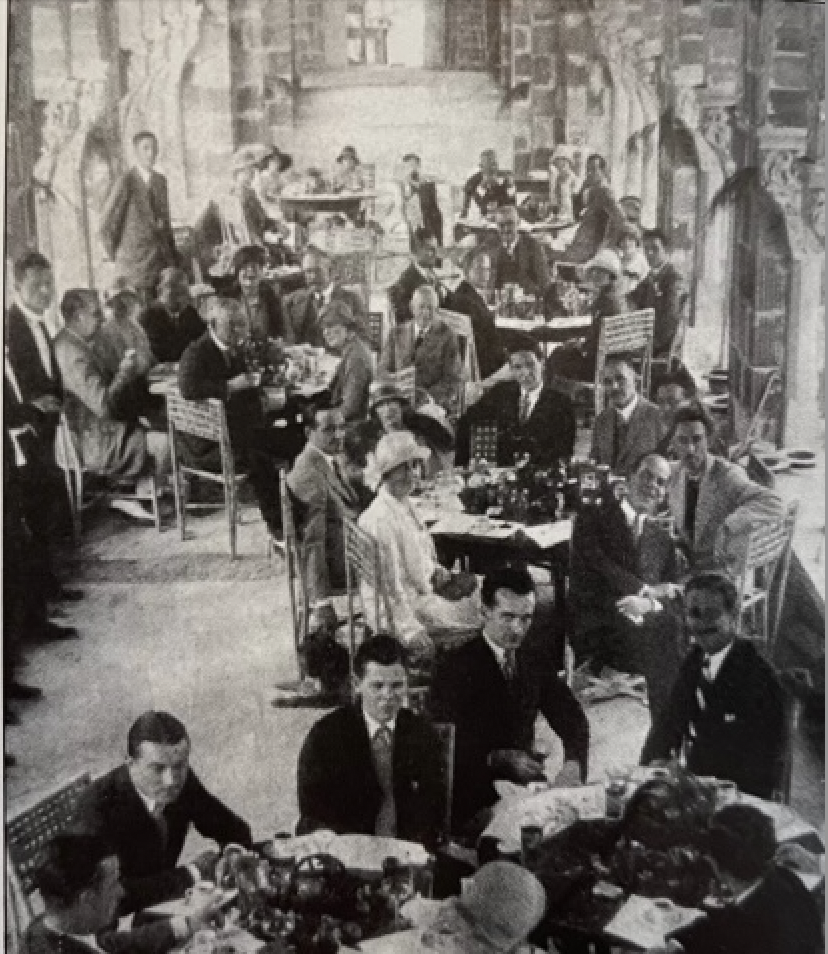
But the celebration was short lived. By 1926, the Florida land boom had slowed. Negative press grew in Northern publications about Florida investments, and about Boca Raton specifically, spurred in part by, shall we say, the "inflated" publicity claims on its behalf. The IRS began to scrutinize Florida real estate deals. ("The Boca Raton development was not a scam, though," points out Susan Gillis, curator of the Boca Raton Historical Society. "Mizner built infrastructure—roads, plumbing. Shysters wouldn't bother with the pretense.")
The three railroad companies operating in Florida, including the Florida East Coast Railway, called an embargo on the shipping of building materials south because of the rail traffic gridlock they caused: Now, only food, fuels, perishables, and essential commodities could enter Florida or move about the state. Topping it all off, a killer category four hurricane struck South Florida on September 18 of 1926, followed by another, even more deadly one, in 1928, bringing the Depression to this part of the state ahead of the rest of the US. The snowbirds who'd already arrived left, others stopped coming. By the time an ad appeared proclaiming, on Boca Raton's behalf, "I am the rendez-vous of the rich/ I am the dream of a genius/ the materialization of a magical mirage/ the sun porch of America," the boom had essentially gone bust. By July 1927, the Mizner Development Company went into bankruptcy.
Mizner died just six years later, in 1933, penniless. ("Remember, the whole world was bankrupt then," Gillis points out.) The Boca Raton story, however, was far from over. In a sense, it was only beginning.
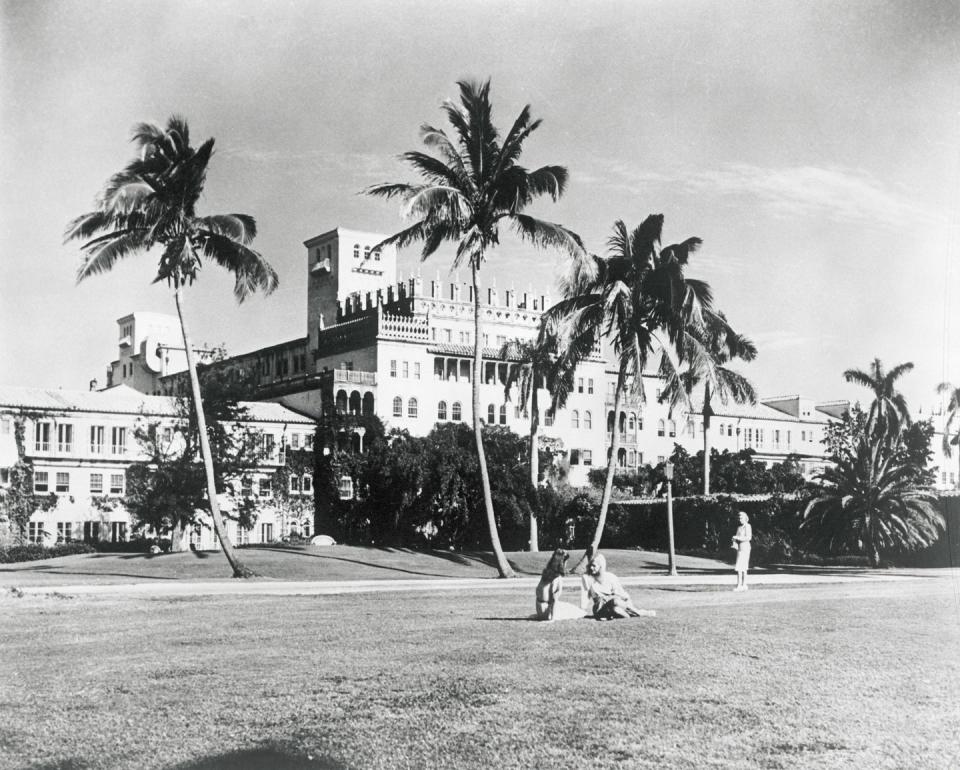
In the fall of 1927, one of the original Mizner Development Corporation investors, Clarence Geist, acquired the company's holdings for a song—$72,000—and hired the famous New York architects Leonard Schultze and S. Fullerton Weaver (designers of the Biltmore in Coral Gables, the Breakers in Palm Beach, and the Waldorf Astoria and Pierre in New York) to triple the size of Mizner's hotel. It opened as the 279-room Boca Raton Club on Christmas 1929, its new wings inspired by the Cloister Inn and in keeping with it (with, as well, a pool, tennis courts, and golf courses, all of which Mizner had planned for but hadn't been able to get to). Mizner's plan for a broad stretch of road, the Camino Real ("the royal highway of Boca Raton," as he had grandiosly called it), a multi-lane, palm-tree-lined boulevard by which residents could reach all parts of the resort within a few minutes by car, was also partially completed then. (And is, in fact, how you arrive at the Boca Raton resort today—and a handsome approach it is.)
While Geist's investment in the new, expanded hotel failed to revive the land boom, as had been hoped, the new club nevertheless became in some ways the savior of the young town of Boca Raton. According to the Historical Society, the community largely reverted back to its agricultural roots in the 1930s, yet the hotel provided an important source of additional income for many residents in the years to come. And it had still other lives: During World War II, as German U-boats plied the waters off the Florida coast (sinking 24 US merchant ships), the Boca Raton Army Air Force Base was established near town and the hotel became the army barracks—"the most elegant barracks in history," as was said.
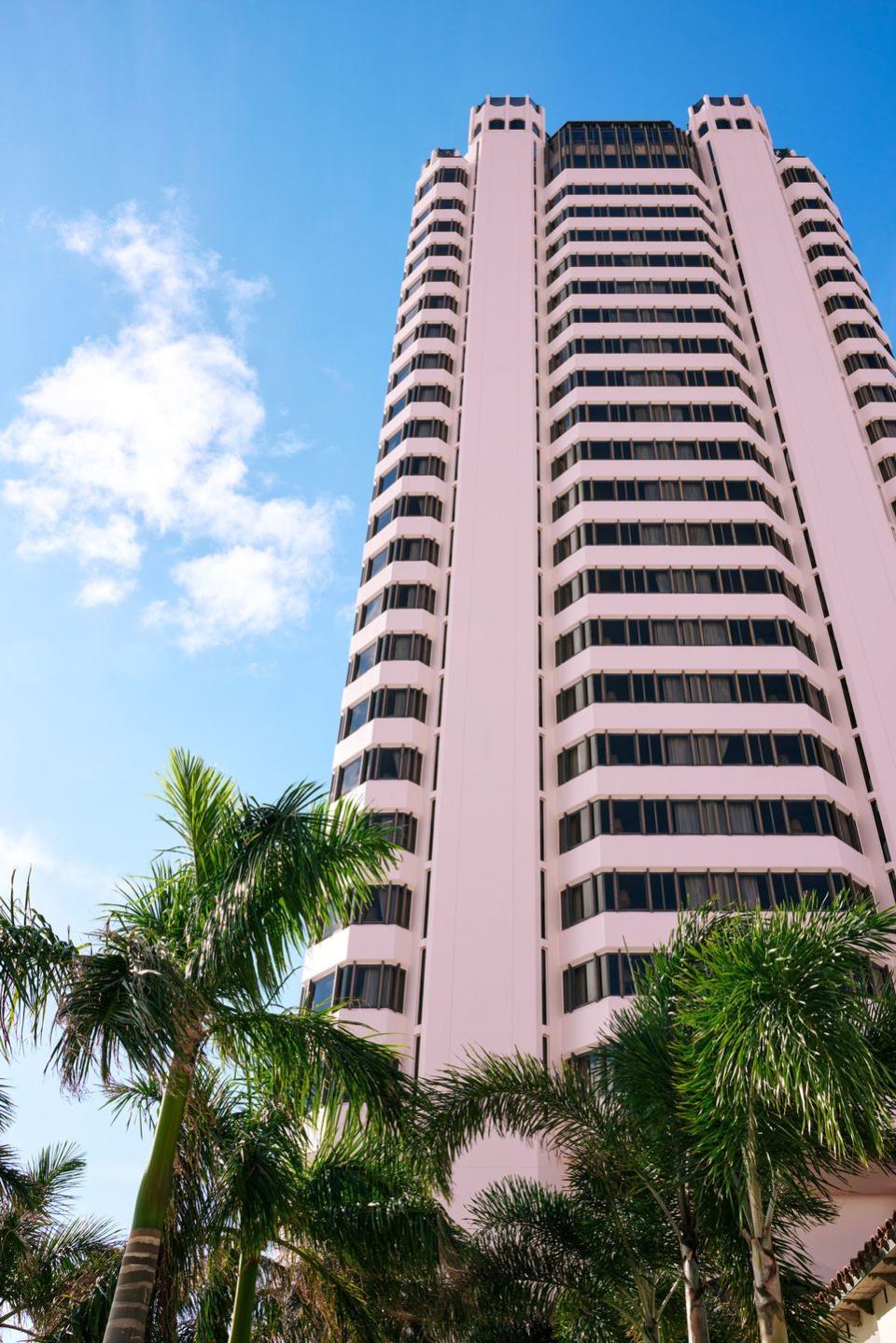
In later years, the property continued to change hands, adding more hotel buildings—construction on the 27-floor Boca Raton Tower began in 1969; ditto the Bungalows, 58 two-bedroom, extended-stay apartments with full kitchens tucked into a self-contained, secluded area of the property right by the golf course and with their own pool; the 212-r00m oceanfront Beach Club, facing the Atlantic on a half-mile stretch of private beach, opened in 1980; and the Yacht Club (where I stayed on this visit), directly adjacent to the Cloister, opened in 2002. The bones may have been good, but the resort as a whole, while still called a "club" (i.e., its amenities open only to members or overnight hotel guests) gradually lost its original glamour and, in the 1980s, its stars. For the 14 years prior to its sale to Michael Dell's MSD Holdings, it was operated by Hilton as a convention hotel.
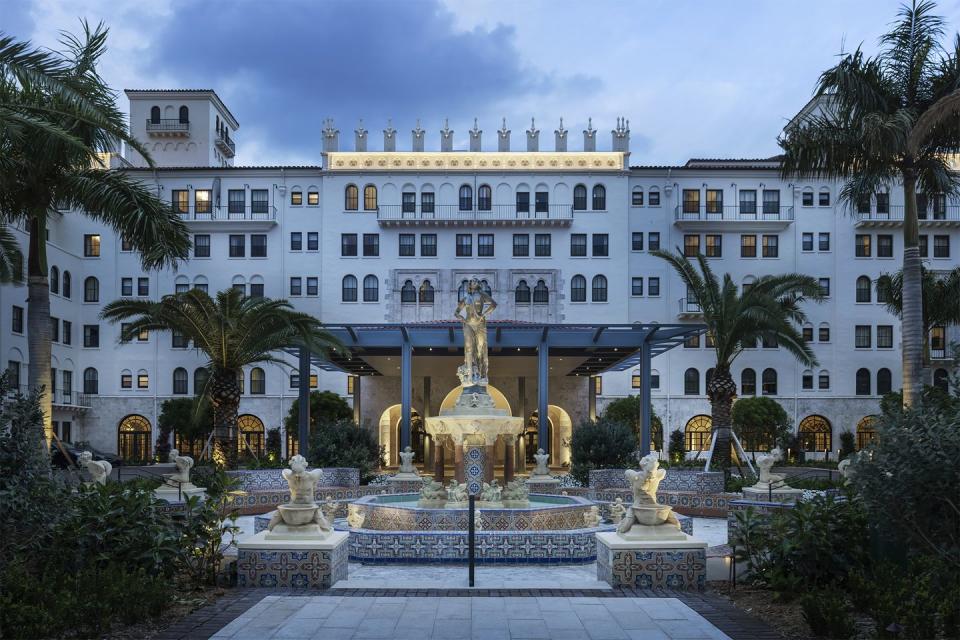
Absolutely nothing about the Boca Raton today says "convention hotel." Which is not surprising. The stated goal of its new owners, and of its president and CEO, Daniel Hostettler—who previously put another independent hotel, Rhode Island's famed Ocean Club, on the map—"is that by 2026, our 100th birthday, we are on that list of the five-to-ten top resorts in America. We want people to come here and feel Boca Raton, and the history, and the way the town grew up around this hotel. Like Palm Beach grew up around the Breakers, and Beverly Hills around the Beverly Hills Hotel. Everything should fit the place. We want that sui generis kind of luxury." Hostettler is in effect picking up Mizner's vision where he was forced to leave off.
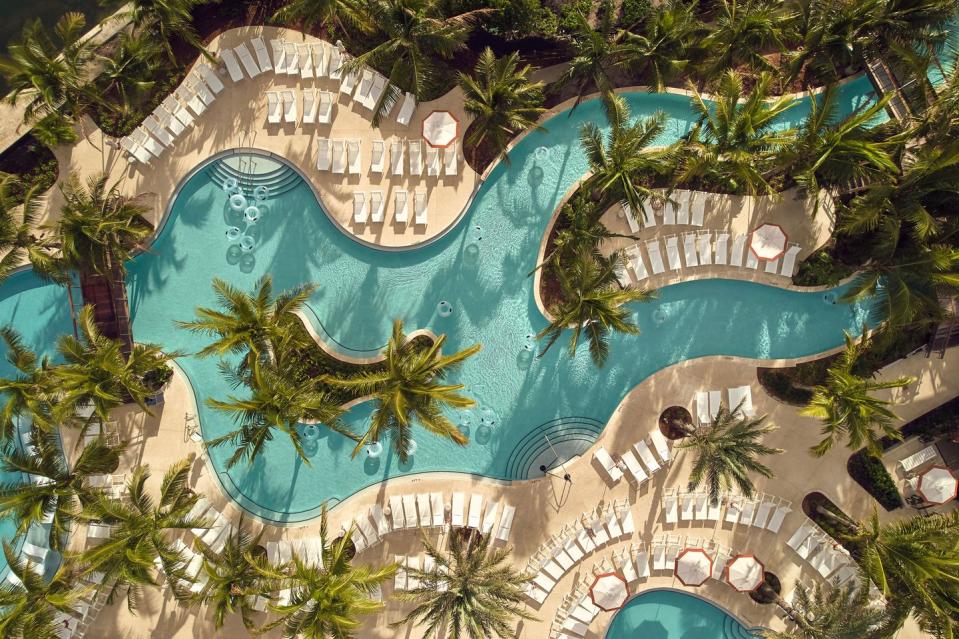
Almost all the work has been completed. Each of its five hotels, including the atmosphere-setting Cloister, where you check in for both the Cloister and the Yacht Club, has been thoroughly renovated and updated. Important note: The project architect, Hostettler tells me, "was concerned that anything we added was clearly an addition, not pretending to be old. We diligently followed this rule." No history-washing here.
Each hotel now has its own general manager, its own staff, and its own distinct personality and vibe. "Luxury," says Hostettler, "is not a 1,000-plus room hotel. Luxury is small properties where we know your name, know what you're doing every day, and where we're creating experiences for you every day."
At the Boca Raton, you pick the place you want to stay based on the kind of experience you want to have—family or couples, secluded or in the thick of things, short stay or long stay, Harborside (fronting the lake) or Beachside (on the ocean); and then have the run of the entire "campus" and all its amenities. Getting around, by the way, is a breeze: Water taxis ply Lake Boca Raton, ferrying a handful of people at a time, on a regular schedule, between Harborside and Beachside. Resort bikes are available at all times, and you can also take out for a spin one of the newest-model Lexus's or Masaratis parked by the main Cloister entrance.)
The old convention center has been razed to the ground and in its place, to the right of the main drive leading from the Camino Real to the Cloister, is the new Boca Raton's biggest addition: a four-acre water park called the Harborside Pool Club. While Mizner might have found its scale surprising, he would have certainly applauded its ambition and the stamp of high-end leisure it puts on the entire complex: It has three pools (including one for adults-only), cabanas with butler service, a pool bar, a restaurant, water slides, a kids' club (Banyan Bunch), a teen center, a surf wave simulator, retail (I picked up some excellent beach wear), and more. A place, in short, where you could happily while away entire days.
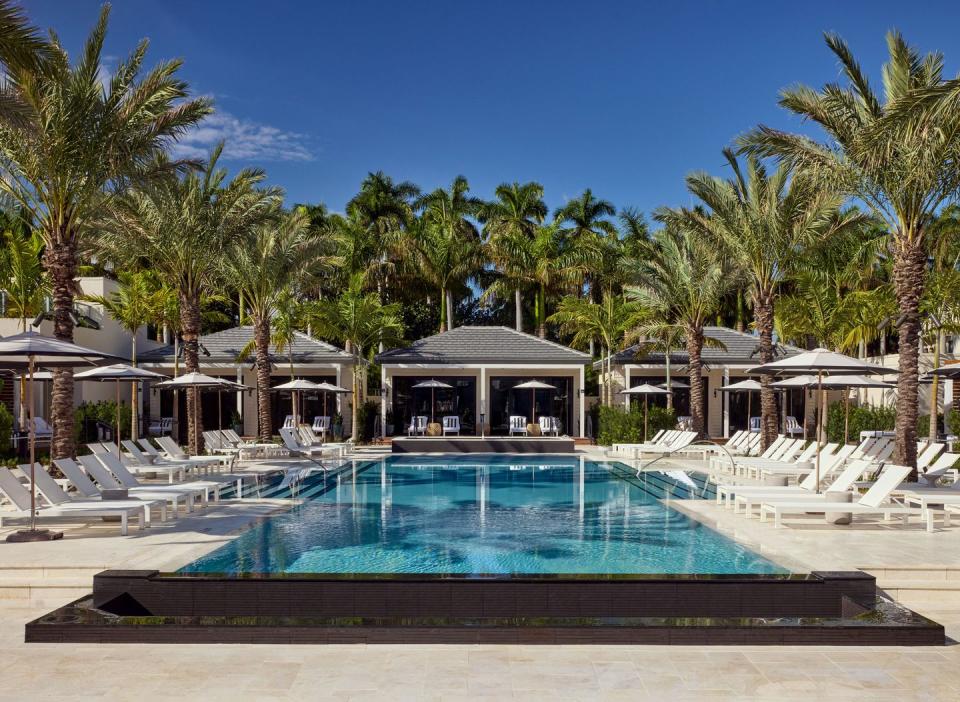
But that would be a shame, because you'd be missing so much more. The Golf Club and Racquet Club, for instance—the former with an 18-hole course and a full program of clinics and lessons, the latter with 16 tennis courts and four pickle ball courts (ditto on clinics and lessons). And the Beach Club: a half-mile of private Atlantic beach with daybeds, food service, and (for when the surf is not enough) three pools with cabana rental.
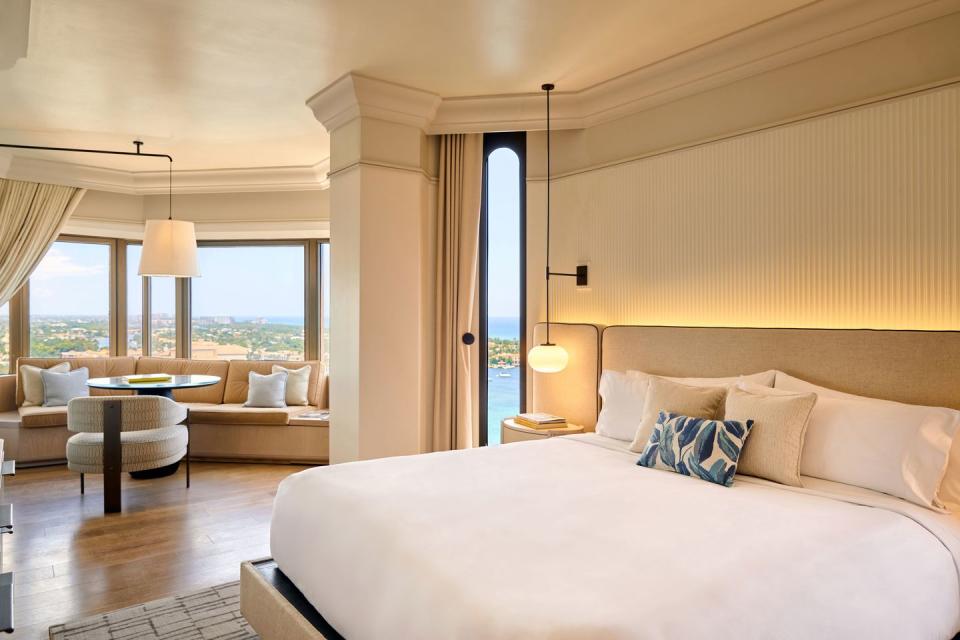
There is boating and sailing, paddle boarding and kayaking, surfing lessons, snorkeling, and a yacht, seating up to 12, that can be chartered for half-day excursions. There are full fitness centers both Harborside and Beachside, with guided classes should you want them. A copy of "The Current," the Boca Raton's resort calendar, is delivered each morning to your room with times and meeting places for a slew of ever-changing classes and events (Quick HIIT and Aqua Zumba, total body conditioning and beach yoga, a culinary demonstration and a mixology class, or, for the history nerds like moi, a tour of the Cloister building with the resident historian.)
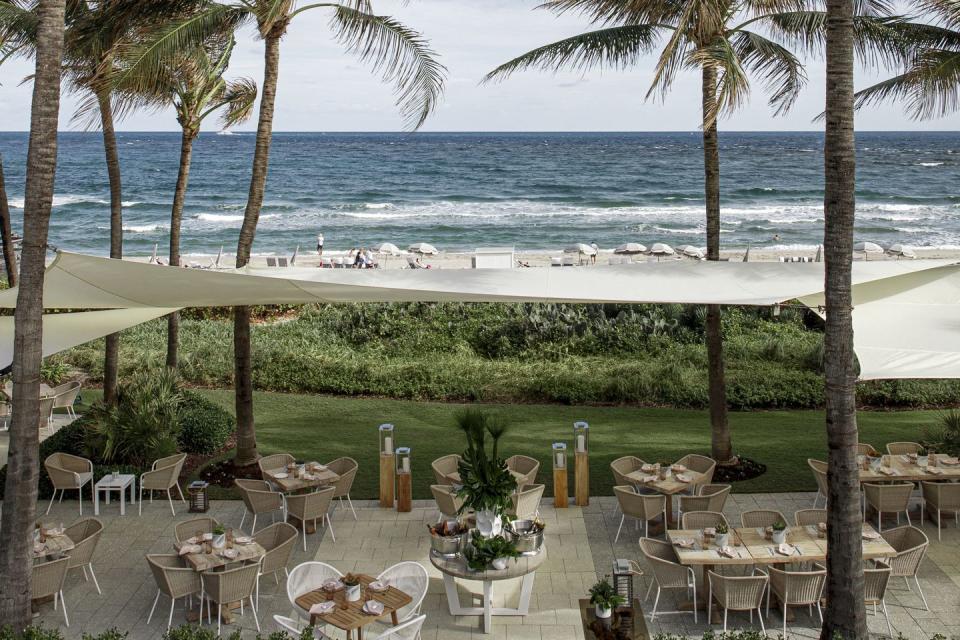
Food? You're spoiled for choice. There are now more than 15 restaurants, bars, and lounges at the Boca Raton—too many to detail here, but suffice it to say that four of them (Sadelle's, the Flamingo Grill, Principessa Ristorante, and the Japanese Bocce Club) are a collaboration with Major Food Group, the folks who brought us the fabulous Carbone in New York City.
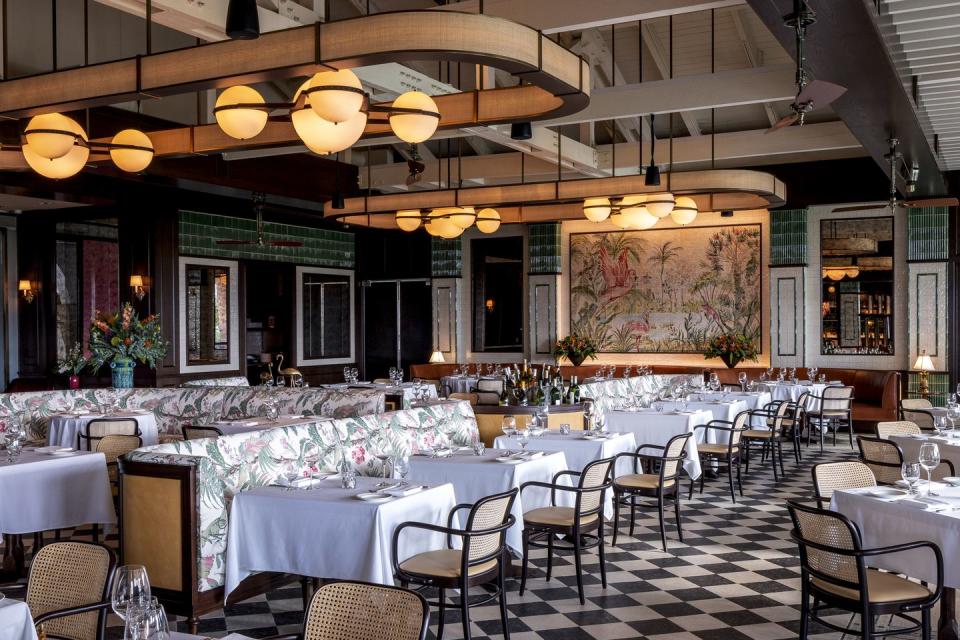
With so much to do (and with so much pleasure in lazying about here and doing not much at all), I went off campus only once, to visit the Boca Raton Historical Society and its museum (natch). It is located in the Old City Hall, which Mizner designed in 1926 as part of his duties as Boca Raton's town planner. (The final design was somewhat altered by one William Alsmeyer to bring the project in at a lower price.) Other than this building and the Cloister hotel, little of Mizner's Boca Raton remains—a few homes in the Spanish Village neighborhood, a few small houses (some 29 were built) in the Old Floresta Historic District, most of them modest versions of the Mizner Med Revival style, designed for employees of the Mizner Development Corporation before it went under.
But in a way, it suffices. It's as if the fairy dust of Addison Mizner's ambition—to create a great American resort town—still elevates this place, the town and the current resort, and still clings to whatever is left of their Alhambra-esque arches and ornate columns. As I tour the little museum, looking at Mizner's lovely plans and drawings, his purpose-made furniture and lamps and tiles, it becomes clear to me that he had swung for the stars. Susan Gillis, the Historical Society's curator (who prefers, where Mizner is concerned, to see the glass not as half-empty but as half-full), sums up the present moment this way: "Addison was a genius. His projects, though mostly not realized, put this place on the map. We still name everything after him. And now, almost 100 years after he conceived them, his dreams are coming true. Too bad he never got to see it."
You Might Also Like

